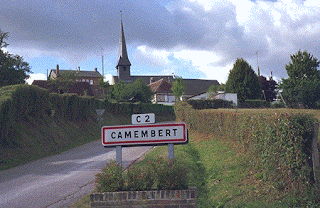Camembert
Camembert is a cheese that originates from Camembert, Normandy, in Northern France, the area from which its name is derived. Camembert is made from cow's milk, unpressed, for at-least 21 days, becoming creamier the longer it is aged. It is very salty and has a taste similar to that of moldy cheeses. It is typically served with a baguette at room temperature. It is also good with fruits and nuts. The best wine to have with Camembert would be Red Bordeaux. It is a more common cheese and is easy to find anywhere.
J'ai adoré le camembert! Il avait le goût du fromage bleu et de brie. Il avait un goût fort, mais était crémeux. Je pense que je vais l'aime mieux avec la baguette. Je le recommande à ceux qui aime le fromage bleu ou brie.
Cutest village!
Le plus mignon village!
Bibliography:
websites:
pictures:
http://oldwayspt.org/blog/oldways-normandy-camembert-and-calvadoshttp://natim4286.blogspot.com/2012/05/camembert-france.html















